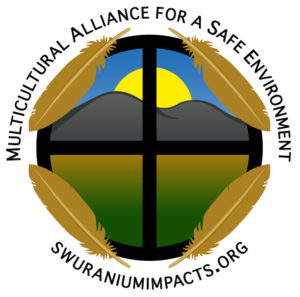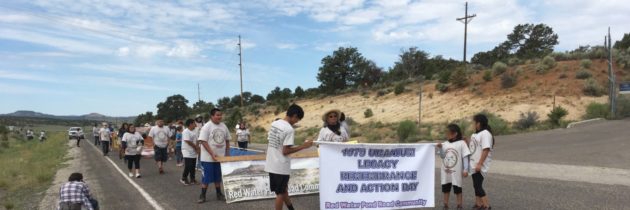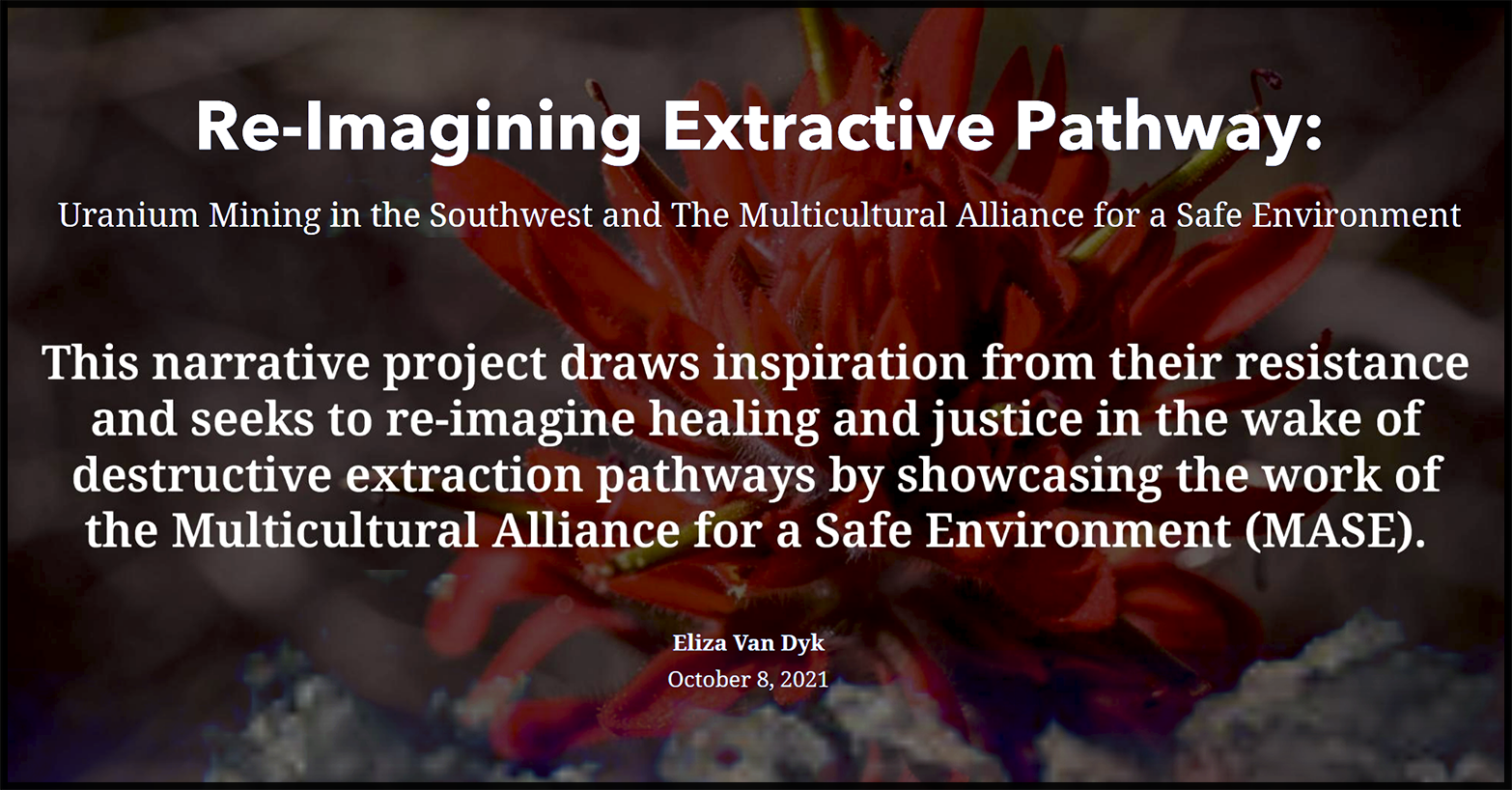SPECIAL ENCORE: Elders, Activists Speak Out – #473 Church Rock Uranium Tailings Pond Breach Disaster in Navajo Nation – 40th Anniversary (2019)
by Libbe HaLevy | Jul 14, 2020
Church Rock 40th anniversary commemoration, July 16, 2019 – former Uranium Miner Larry J. King (center) explains the site of the 1979 Church Rock uranium tailings pond breach. This under-reported radioactive disaster dumped more than 94 million gallons of uranium-contaminated waste water into the adjacent Puerco River. Now 41 years later, it has yet to be cleaned up.
Listen Here: Audio Player
Podcast: Download
Church Rock Uranium Tailings Pond Spill Commemoration, July 16, 2019: Uranium mining marks the start of the nuclear fuel chain, the deadly journey uranium takes to become atomic weapons, nuclear reactors, and tons of highly radioactive waste. NOTE: This is a special ENCORE PRESENTATION of the 2019 40th anniversary of the disaster.
On July 13 and 14, 2019, Nuclear Hotseat’s Libbe HaLevy attended commemorative events for the 1979 Church Rock uranium tailings pond breach and spill. This under-reported nuclear disaster dumped more than 94 million gallons of highly acidic radioactive water into the adjacent Puerco River. The contamination reached Sanders, Arizona, more than 80 miles away. The spill has never been cleaned up. Even after being declared a Superfund site, it needs at least two years before the Nuclear Regulatory Commission finishes its review of the EPA’s clean-up plan. Clean-up can’t even begin until and unless the plan is approved. And even that plan has come in for criticism by activists and community members.
From Navajo Nation. They include: residents of the Red Water Pond Road Community, located adjacent to the spill site; commemoration event attendees; government officials; and activists from as far away as Japan.






